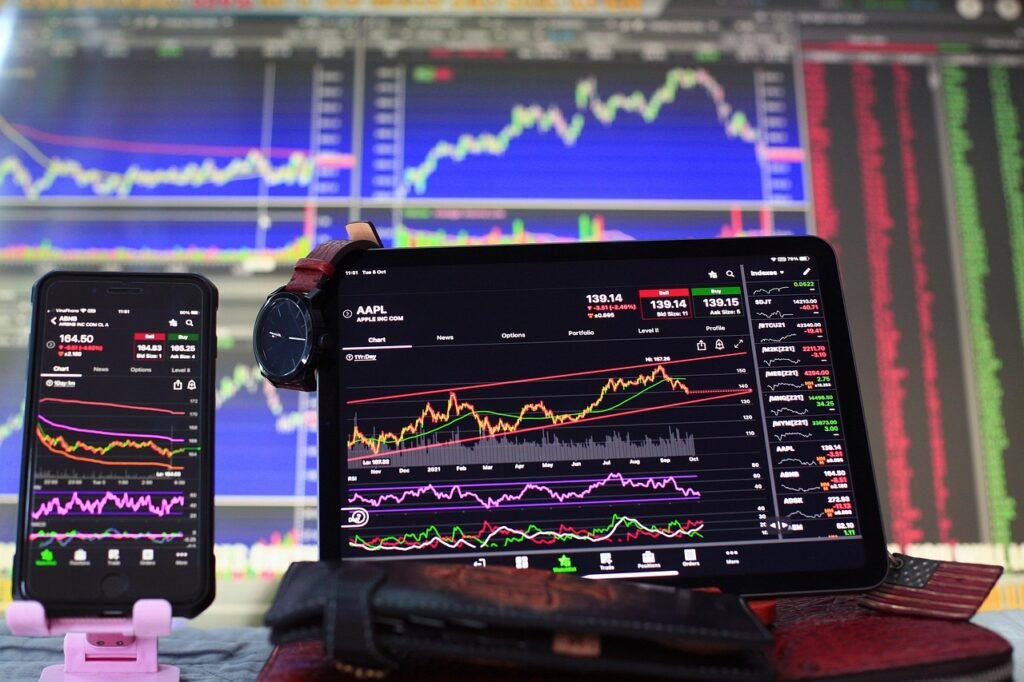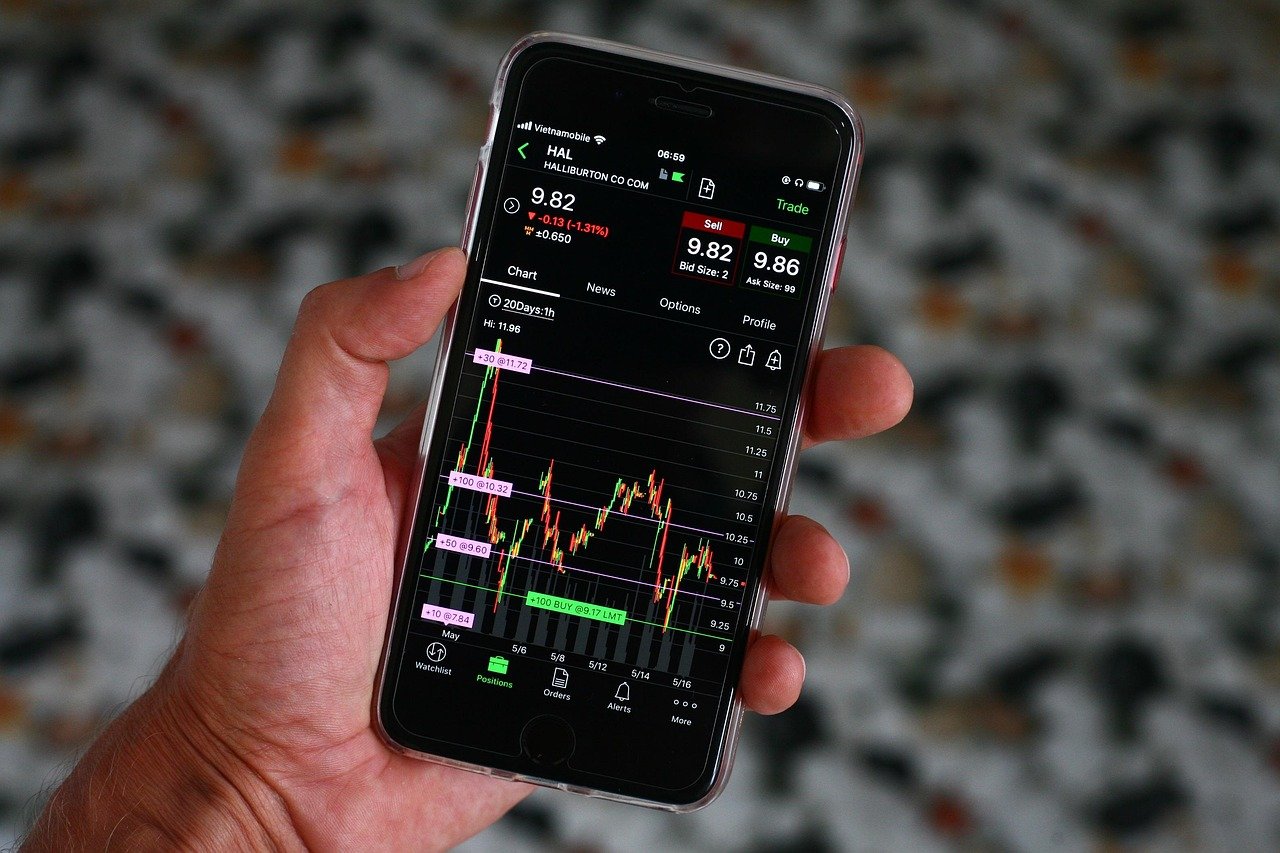Learn how to buy call options on Robinhood step by step in this beginner-friendly guide. We break down 10 simple steps with tips and easy explanations.
Buying Call Options Step-by-Step in Robinhood: A Beginner’s Guide
Buying a call option might sound complicated, but it’s actually pretty straightforward on Robinhood. In this guide, we’ll walk you through buying call options on Robinhood in 10 easy steps. We’ll also include pro tips, an example using PepsiCo stock, and a quick comparison of each step. By the end, you’ll know exactly how to place a call option trade using the Robinhood app, step by step.

What’s a Call Option?
A call option is basically a contract that gives you the right to buy a stock at a specific price by a certain date. It’s a way to bet that a stock’s price will go up. If the stock rises above that set price (called the strike price) before the option expires, your call option can become valuable – you could buy the stock at the cheaper strike price and then potentially sell it at the higher market price. If the stock doesn’t rise enough, the option might expire worthless and you lose what you paid (the premium). Don’t worry, we’ll keep things simple and focus on how to actually buy a call option on Robinhood. (For a deeper dive into options basics, check out our complete beginner’s guide to options trading on our blog.)
Why Robinhood?
Robinhood is a popular app for beginners because it’s user-friendly and commission-free. That means you pay no fees to place a trade – even on options, there are no per-contract commissions for stock options trades, unlike some brokers that charge a fee per option contractinvestopedia.com.
This makes it easier for new investors on a budget. Plus, as of 2025, options trading on Robinhood has surged in popularity, with more and more people trying it out. In fact, options trading overall is at record levels – in 2023, over 11 billion options contracts were traded in the U.S., an all-time high reflecting how many investors are using options now (a sign of how mainstream options have become).
Ready to learn? Below, we’ll go through 10 steps to buy a call option on Robinhood, one by one. We’ll use simple language and walk through an example. Let’s get started with the first step!
How to Buy Call Options on Robinhood in 10 Steps
Buying a call option on Robinhood is a step-by-step process. Here are the 10 steps, from setting up your app to placing the trade and beyond. Follow along and you’ll place your first call option trade with confidence!
- Open a Robinhood Account & Fund It: If you haven’t already, you’ll need a Robinhood brokerage account. Sign up on the Robinhood app or website – it’s free. You’ll provide some personal info (like name, address, Social Security number – standard stuff) and answer a few investing questions. Once approved, link your bank and deposit some funds (even $50 or $100 to start). You can’t trade until your account has money in it. Robinhood is designed for beginners, so the account setup is quite easy. Tip: Start with a small amount that you’re comfortable using for learning. You can always add more later as you get the hang of it.
- Enable Options Trading on Robinhood: By default, new Robinhood accounts might not have options trading turned on. To enable options, go to your account settings in the app. Navigate to the Investing section and look for “Options Trading”. Robinhood will ask you to apply for options trading – basically a short questionnaire about your investing experience, income, and understanding of risks. Don’t panic; answer honestly. Many beginners get approved for Level 2 options, which allows basic strategies like buying calls and puts. Approval can be instant or take a bit of time. Once approved, you’re ready to trade options! Tip: If you’re completely new, Robinhood might limit you to Level 2 (basic options) at first – which is fine for buying call options. More advanced Level 3 strategies come later once you gain experience.
Step: Enabling options trading in the Robinhood app. Go to Account settings → Investing → Options Trading and follow the prompts to get approved.
- Find the Stock You’re Interested In: Now, decide on a stock for your call option. In the Robinhood app, tap the search (🔍) icon and type the company name or ticker symbol. For example, if you’re interested in Apple, search “Apple” or the ticker “AAPL.” Tap the stock to open its detail page. Make sure this is a stock you’ve researched and you believe the price will go up in the future. (Maybe you read some news or analysis giving you confidence in the stock’s prospects.) In our example later, we’ll use PepsiCo (PEP) as the stock of interest. For now, open the stock’s page – you’ll see its current price and chart.
- Open the Options Trade Screen: On the stock’s page, look for the “Trade” button. Tap it, and then tap “Trade Options.” This will take you to the options trading screen for that stock. Here you’ll see a list of option contracts. Don’t be overwhelmed – we’ll break it down. At the top, you’ll see expiration dates. By default, Robinhood might show the nearest expiration (like options expiring this week or month). Each expiration has its own list of option contracts. We want to buy a call option, so ensure “Buy” and “Call” are selected (Robinhood’s interface will usually default to buy calls first). You are now in the place where you can choose your specific call option.
Step: On a stock’s page (e.g., Apple), tap Trade → Trade Options to bring up the options trading screen. This is where you select expiration dates and specific call options.
- Choose an Expiration Date: Options don’t last forever; each has an expiration date. When buying a call, you need to decide how long you think it will take for the stock to rise. Robinhood will show you a list of dates (Fridays, since most options expire on Fridays). For example, you might see expirations for each week of the next month, then monthly dates. If you think the stock will go up soon, you might pick a nearer expiration (but those options have less time and can be riskier if the move doesn’t happen quickly). If you want more time for your prediction to come true, pick a later date. Tap an expiration date to see the available call options for that date.
- Short-term vs long-term: A call expiring sooner (say in one week) is cheaper but riskier (less time for the stock to move). A call expiring later (say in 2 months) is pricier but gives the stock more time to rise. As a beginner, you might start with something in the middle – not too close, not too far, maybe a few weeks out.
- Tip: If you’re unsure, choosing an expiration about a month away can be a reasonable starting point. It balances cost and time. You can always adjust as you learn more.
- Select a Strike Price (the “Price” of the Option): After choosing expiration, you’ll see a list of strike prices – these are the prices at which you could buy the stock if you exercise the option. For each strike, you’ll see the premium (price) of the call option. The strike price is like the target price: you’re predicting the stock will go above that price by expiration. For example, if the stock is $100 now, a $105 strike call means you think it’ll climb above $105. Lower strike prices (closer to the current stock price or below it) make the options more expensive, because they’re more likely to end up profitable. Higher strike prices (further out of the money) are cheaper but require a bigger stock move to profit. Tap on a strike price that fits your expectation and budget.
- Reading the option price: Let’s say next to the $105 strike it says $2.50. That $2.50 is per share, and each contract covers 100 shares, so it would actually cost $250 for one contract. Robinhood will show this clearly when you select it.
- Consider your budget and confidence. If you’re fairly confident in a big rise, you might choose a slightly higher strike for a cheaper price. If you want a safer (but more expensive) bet, a strike near the current stock price costs more but needs only a small rise to profit.
Step: Selecting a call option. Here, various strike prices are listed with their premiums. A call with strike $230 costs about $5.25 (per share), so $525 per contract. Choose the strike that matches your expectations and budget.
- Review the Call Option Details: Once you tap a specific call option, Robinhood will show you the details. You’ll see information like the bid price, ask price, breakeven point, and chance of profit. For a beginner, key things to note are:
- Premium (Price): How much you’ll pay per share (remember to multiply by 100 for a full contract cost).
- Breakeven: Robinhood often shows a breakeven price – if the stock is above this price at expiration, your option would be in profit (this breakeven accounts for the strike plus the premium you paid).
- Chance of Profit: A rough percentage Robinhood provides, estimating the likelihood that the option will be profitable by expiration (take this as a rough guide, not gospel).
- Expiration Date and Strike: Double-check you picked the right ones you intended (you can go back if not).
- Everything look okay? Great! Now you’re ready to buy.
- Enter Your Order – Buy the Call Option: On the option details screen, hit the “Buy” or “+” button (Robinhood might have a big “Continue” or just an input screen after you select the option). Now enter the number of contracts you want. As a beginner, you’ll likely start with 1 contract (which represents 100 shares). You’ll see the total cost populate. For example, if the premium is $2.00 and you enter 1 contract, it will show $200 total (since $2.00 × 100 shares = $200). Next, you’ll choose the order type. Typically, you’ll do a market order to buy immediately at the current price, or you can set a limit order at a specific price if you want. For simplicity, a market order will fill your purchase right away at the best available price.
- Confirm Funds: Make sure you have enough cash in your Robinhood account to cover the cost. If the option costs $200 and you only have $150, you’ll need to deposit more or choose a cheaper option.
- Place Order: Swipe up or tap “Review” then “Submit”/“Buy” to place the order. Robinhood will confirm the order has been placed, and if it’s a market order, it should execute almost instantly during market hours.
Step: Placing the order for a call option. Here you enter 1 contract, see the market price (premium) per share, and Robinhood calculates the total cost (e.g., $525). Review your order, then submit to buy the call option.
- Confirmation and Position Monitoring: After placing the order, you should see a confirmation that your order executed (filled). Congratulations – you just bought a call option! 🎉 Now this call option will appear in your portfolio. You can view it by going to the stock’s page or your account’s options section. It will show the current value of the option, which will fluctuate as the stock price moves. Monitor the stock’s price over time. If the stock goes up, your call option’s value will generally increase; if the stock falls or time passes without a rise, your option’s value will likely decrease. You don’t have to hold until expiration – you can choose to sell the call option anytime before it expires to lock in a profit or cut a loss.
- Tip: Robinhood shows your option’s unrealized profit/loss in real time. Don’t be alarmed by the ups and downs – options prices can swing more quickly than stock prices. It’s usually best to have a target in mind (for example, “I’ll sell if it roughly doubles” or “I’ll limit my loss to 50% of what I paid”) so you have a plan.
- Sell or Exercise the Call Option: Finally, decide what to do before the option expires. You have two main choices:
- Sell the option contract to another trader. This is what most people do. You’d tap “Sell” on that contract in Robinhood and place a sell order. Ideally, you sell at a higher premium than you bought, netting a profit. For example, you bought for $2.00 ($200) and later sell for $4.00 ($400), you made a $200 profit (minus negligible fees).
- Exercise the option to buy the actual shares at the strike price. As a beginner, you probably won’t do this unless you really wanted to own the stock. Exercising means you use your option to purchase 100 shares at the strike price. You’d need enough money in your account to pay for those shares. For instance, strike $105 means $10,500 to buy 100 shares. If you have that kind of money and want the shares, you can exercise. Otherwise, most just trade the option itself.
- If the option is out of the money (stock price stayed below the strike) and it’s expiration day, it may expire worthless. In that case, there’s nothing you need to do – it will just lapse, and you lose the premium you paid. Important: Don’t feel too bad if that happens; even experienced traders have options expire worthless. Learn from it and try again with a fresh outlook.
That’s it – those are the 10 steps! You’ve opened an account, enabled options, researched a stock, selected an option, and executed a call option trade on Robinhood. It feels like a lot at first, but once you do it a couple of times, it becomes routine.
Example: Buying a Call Option on PepsiCo (PEP) – Step by Step
Let’s tie it all together with a real-world example using PepsiCo, Inc. (ticker PEP). This will show how the steps look with actual numbers (as of today):
- Step 1-3: You have a funded Robinhood account and you’ve enabled options trading. You decide to trade PepsiCo. The stock is currently around $149 per share (mid-August 2025). You believe Pepsi’s price might go up in the next month or so – maybe there’s an upcoming product launch or strong earnings expected.
- Step 4: On Robinhood, you search “PEP” and open PepsiCo’s page. You tap Trade → Trade Options.
- Step 5: You choose an expiration date about a month out – let’s say September 20, 2025 (just as an example).
- Step 6: Now you see the call options. Pepsi is $149 now, so strike prices around $150 are near the money. You decide to pick a strike of $155. That means you’ll profit if PEP goes well above $155 by the expiration. This out-of-the-money call is cheaper than an at-the-money $149 call.
- Step 7: The option premium for the $155 call might be roughly around $2.00 per share ($200 per contract) at this moment (hypothetically). Robinhood shows the breakeven might be around $157 (strike $155 + $2 premium = $157 breakeven). That tells you PEP needs to rise above $157 by Sept 20 for this trade to profit at expiration.
- Step 8: You hit Buy, enter 1 contract, and see the estimated cost ~$200. You place a market order to buy the call. The order fills, and now you own 1 call option for PEP with strike $155, expiring Sept 20.
- Step 9: Over the next couple of weeks, suppose PepsiCo’s stock rises to $160. Great news! Your call option premium might jump from $2 to, say, $6 (because now it’s in the money and has some extra value). Your $200 investment could be worth $600 – a potential profit if you sell now.
- Step 10: You decide to sell the call option to take your profit. In the app, you go to your PEP call, tap Sell, and place an order to sell 1 contract at the current price. It executes, and you receive $600. Minus the $200 cost you paid, you made a $400 profit (again, hypothetical example). 🎉 If PEP had instead stayed flat or fallen, your option might have lost value. In the worst case, if PEP stayed below $155 by expiration, the option would expire worthless and you’d lose the $200. But in this example, you guessed right about the stock’s rise!
This Pepsi example shows how a call option trade can play out. Always remember, options involve risk – you can lose the entire premium paid, so never invest more than you can afford to lose in these trades. But they also offer upside if you’re correct about the stock’s direction, as illustrated.
Quick Comparison of the 10 Steps (Time, Difficulty, and Key Points)
To wrap up, here’s a side-by-side comparison of all the steps in the process, highlighting roughly how much effort or time each step takes and important considerations:
| Step | What You Do | Difficulty/Time | Key Considerations |
|---|---|---|---|
| 1. Open & Fund Account | Sign up and deposit money | Easy (minutes to a day for approval) | Need SSN, basic info; Deposit at least $1 (more for trading options). |
| 2. Enable Options | Apply for options trading | Easy (few minutes) | Quick questionnaire; likely get Level 2 approval for buying calls. |
| 3. Find a Stock | Research and select stock | Medium (varies) | Pick a stock you believe will rise. Research news, trends. |
| 4. Open Options Screen | Tap Trade → Trade Options | Easy (seconds) | Navigate the app interface to access options for your chosen stock. |
| 5. Choose Expiration Date | Pick how long until option expires | Easy (seconds) | Closer date = cheaper but riskier; later date = more expensive but safer. |
| 6. Select Strike Price | Pick the option’s strike price | Medium (seconds) | Balance strike vs. cost: closer to current price costs more but easier to hit. |
| 7. Review Option Details | Check premium, breakeven, etc. | Easy (seconds) | Ensure you understand cost (premium × 100) and breakeven point. |
| 8. Buy the Call Option | Enter order (contracts, type) | Easy (seconds) | Typically buy 1 contract with a market order to fill immediately. |
| 9. Monitor Position | Watch option value & stock moves | Medium (minutes to days/weeks) | Requires patience; don’t panic over normal ups/downs. Have a profit target or max loss in mind. |
| 10. Sell or Exercise | Close out the option or exercise | Medium (seconds to decide) | Usually sell to take profit or cut loss. Only exercise if you want to own the shares and have the funds. |
As you can see, most steps are quick and easy on the app – the harder part is actually researching the stock (step 3) and deciding your strategy (steps 5, 6, and 10). The app does the heavy lifting of execution with just a few taps.
Conclusion
Buying a call option on Robinhood is a simple process once you break it down. To recap, you open and fund your account, enable options trading, pick a stock you’re bullish on, and then select a call option (expiration and strike) that fits your outlook. After that, it’s just a matter of placing the order and then monitoring what happens. We went through 10 key steps to do this, and even looked at an example with PepsiCo stock to see how a real trade might work out.
Remember, options trading comes with risk and reward. The biggest advantage of buying call options is the potential for large gains if the stock goes up, while limiting your loss to the premium paid. For instance, a $200 investment in a call could turn into a much larger profit if the stock soars, but if the stock doesn’t move as expected, you could lose that $200. Always do your research and consider using risk-management strategies (like only investing small amounts at first, or setting stop-loss levels on options).
On Robinhood, you have the benefit of no commissions on options trades, making it a friendly place for new options tradersinvestopedia.com. The app’s simplicity is great, but keep in mind that simplicity also means it might not have every advanced tool that other platforms have. That’s okay when you’re starting out. Focus on learning the basics as you’ve done with this guide.
Please visit Academic Broadcasting Platform for getting more option trading ideas and tricks.
We hope this step-by-step guide has made the process clear and approachable. If you have been wondering “How do I buy a call option on Robinhood?”, now you have the answer in plain English. By practicing with small trades, you’ll become more comfortable with how options work. Over time, you can explore more strategies (like puts, spreads, etc.), but buying a call is a great way to begin.
Good luck with your investing journey! Remember to stay curious, keep learning, and only trade with amounts you’re willing to risk. With each trade, you’ll gain experience. Happy trading, and may your calls be in the money!








